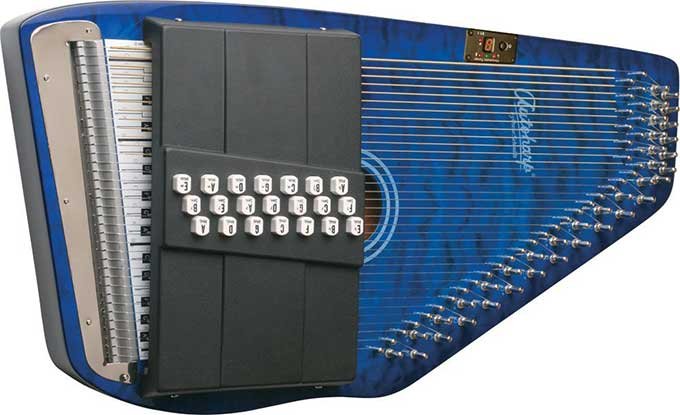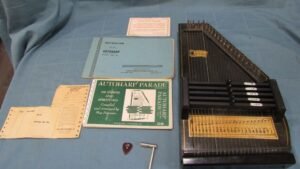
Identifying a high-quality autoharp involves understanding key features and indicators of craftsmanship that contribute to superior sound and durability. Whether you’re a beginner or a seasoned player, knowing what to look for can help you choose an instrument that meets your musical needs and expectations. Here’s a detailed guide to identifying a high-quality autoharp.
Craftsmanship and Build Quality
High-quality autoharps are distinguished by their craftsmanship and attention to detail:
- Materials: Look for instruments made from solid woods such as maple, spruce, or mahogany, which contribute to better resonance and tone quality.
- Construction: Check for sturdy construction, including well-fitted joints, smooth edges, and a durable finish that enhances both aesthetic appeal and longevity.
- Workmanship: Examine the precision of the chord bar mechanism, tuning pegs, and string alignment to ensure smooth operation and tuning stability.

Sound Quality and Tone
The sound quality of an autoharp is a primary indicator of its craftsmanship and materials:
- Richness and Clarity: A high-quality autoharp produces a rich, clear sound with distinct harmonics across all strings.
- Sustain: Evaluate the sustain of notes, which should resonate evenly and hold their pitch without excessive damping or buzzing.
- Dynamic Range: Listen for a wide dynamic range that allows for expressive playing, from soft, delicate tones to powerful, resonant chords.
Types of Autoharps and Their Features
- Diatonic vs. Chromatic Autoharps: Diatonic autoharps are tuned to specific keys, while chromatic models offer versatility with a wider range of notes and key options.
- Chord Bar Configuration: Different autoharps have varying numbers of chord bars, affecting the chords available and the instrument’s versatility for playing different musical genres.
- Scale Length and String Configuration: Consider the scale length (distance between the nut and bridge) and string configuration (number and gauge of strings) for comfort and playability.
Brand Reputation and Reviews
Researching reputable brands known for producing high-quality autoharps can guide your selection process:
- Customer Reviews: Read reviews and testimonials from other musicians to gauge overall satisfaction with specific models and brands.
- Longevity and Support: Established brands often offer warranties, customer support, and resources such as manuals or online tutorials to assist with maintenance and playing techniques.
Testing and Evaluation
Whenever possible, play and test the autoharp to assess its performance and suitability:
- Playability: Evaluate the action (string height), ease of pressing chord bars, and overall comfort when holding and playing the instrument.
- Tuning Stability: Check the tuning stability by strumming chords and monitoring how well the instrument holds its tuning over time.
Price vs. Value Considerations
While price can be an indicator of quality, consider the overall value provided by the autoharp in terms of craftsmanship, sound quality, and durability:
- Budget Allocation: Set a realistic budget based on your level of commitment and musical goals, balancing affordability with long-term investment in a quality instrument.
Conclusion
Identifying a high-quality autoharp involves assessing craftsmanship, sound quality, brand reputation, and personal preferences. By understanding the construction, materials, and performance characteristics that define excellence in autoharps, you can make an informed decision that enhances your musical journey and satisfaction.










